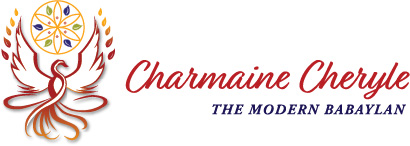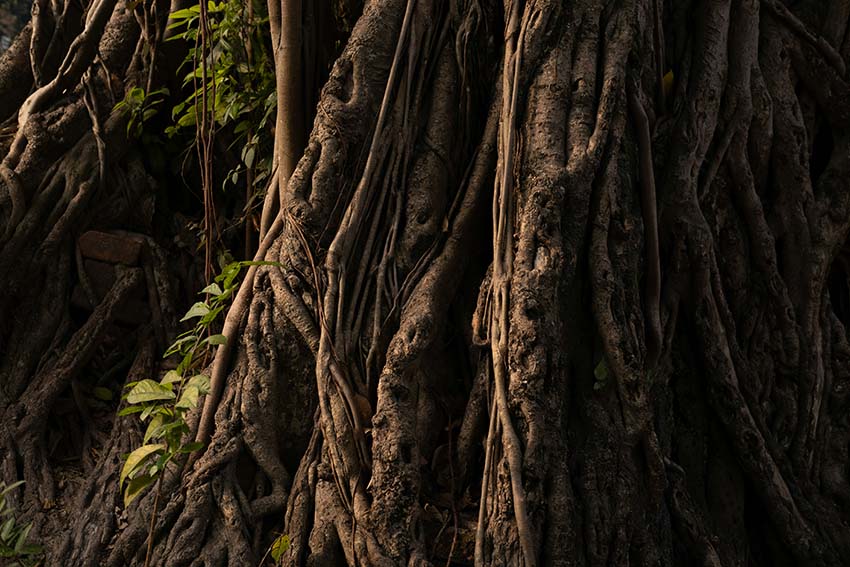Recently, I shared a statement on my Facebook page about what it means for me to carry the name Modern Babaylan. The response reminded me how important it is to speak this truth more fully — not as debate, but as clarity, reverence, and honoring.
The word Babaylan carries great weight.
In our ancestral villages in the Philippines, a Babaylan was not self-proclaimed. They were recognized by the community, guided by protocols, and most importantly — chosen by Spirit. They carried the responsibility of healing, ceremony, and being a bridge between the seen and unseen worlds.
But it is worth asking: Who chose the first Babaylan?
Before there were community protocols, before there was recognition, there was Spirit. Spirit entrusted visions, medicine, and prayers to someone who was listening — and the role was born.
Of course, Spirit’s choosing was never instant, nor easy. The path of the Babaylan was — and remains — one of initiation, healing, and many lessons. The one called had to walk through their own healing and face challenges. The calling unfolds through trials, visions, and the slow strengthening of trust between the healer and Spirit. Becoming a Babaylan was — and still is — an unfolding, not a single moment of arrival.
Spirit’s Choosing & Ancestral Training
Many traditions across the Philippines speak of how Babaylans are “chosen”: sometimes through visions or dreams, sometimes through illness that could only be healed by embracing the role, and sometimes by inheritance within a family line.
This is what I mean when I say we cannot limit the Babaylan path to a purely human perspective. Too often we think only in terms of 3D training — being taught by an elder, apprenticing under a known babaylan, receiving recognition from a community. Those are real and important ways. But before any of that, there is the unseen calling.
I know this truth intimately. I have been initiated, nurtured, and trained by my Ancestors who are Babaylans and healers in Spirit. Yes — I took classes and received human teachings that helped me unfold my abilities. But beyond those classes, I did thousands of hours working with Spirit, and Spirit was my greatest teacher. Spirit calls in many ways — through dreams and visions, through synchronicities and the quiet receipt of information, through hearing Spirit’s guidance and seeing what others cannot, and through the crucible of illness and initiation. My own path has included these: visions, near-death experiences, my journey with breast cancer, the inheritance of lineage that remembers — and more. I also experienced an elder-led initiation — a small ceremonial moment of beads pressed upon my forehead, whose meaning unfolded over time, and which I later recognized as a quiet confirmation from the Ancestors. Spirit-led healings and the constant presence of my Ancestors have affirmed this calling again and again. This was Spirit school — a rigorous, lifelong initiation where Spirit formed, tested, and taught me, not a classroom course.
Lineage & Responsibility
I am a full Indigenous Filipina tribal member, rooted in the Cuyonon and Kagayanen tribes of Palawan. The Babaylan lineage runs in both my maternal and paternal lines — carried forward through generations of healers and remembered within me today. This remembrance is not only written in my ancestry but alive through the Spirit and Ancestors who continue to walk with me.
Though I live in the diaspora, this connection has never left me. The calling of the Babaylan is not bound by location. It moves through Spirit, through ancestry, and through those being called into service — whether the memory of a Babaylan in their family line is near or many generations past, or whether Spirit has chosen them in a different way altogether. For many, it waits to be reawakened, and in this time of great change, Spirit is calling many to rise.
For me, it was divine design to be raised in the diaspora: to embody the Modern Babaylan. Had I not lived here, I would not have had the same access to experiences, knowledge, and connections that have shaped me into who I am today. My community now extends to those around the world.
When I use the name Modern Babaylan, it is not as a brand or a title for prestige. It is not for recognition, but for responsibility. This is sacred work. It is how I name the ancestral and Spirit calling alive in me today — a calling I hold with reverence, humility, and devotion.
Honoring Traditional Babaylans
I hold deep reverence for the Babaylans who still live and serve in Indigenous communities across the Philippines. They carry immense responsibilities — not only as healers of the body and soul, but as keepers of rituals, ceremonies, and ancestral memory. They preserve the sacred ways that root us to the land, to the unseen, and to each other.
These Babaylans walk paths that are often hidden from the wider world — tending to their people quietly, courageously, and with unwavering devotion. They carry lineages that survived colonization, displacement, and centuries of erasure. The fact that Babaylans still live, breathe, and serve today is itself a testament to resilience and Spirit’s unbroken presence among our people.
When I use the name Modern Babaylan, I do not claim to replace or replicate them. I do not speak for them, nor do I place myself above them. I honor them with humility and respect, acknowledging that my role is different. Their sacred responsibilities are tied to their lands and communities; mine is to embody how Spirit and Ancestors live through me here and now, bridging across diaspora and beyond.
Modern Babaylan — What This Means for Me Today
For me, being a Modern Babaylan means embodying the ancestral calling as it lives through me here and now.
It lives in me as a poet, weaving words that heal and awaken.
It lives in me as a healer, supporting body, soul, and spirit.
It lives in me as a teacher, helping others remember their own sacred roots.
It also lives in me as a bridge — for the past, the present, and the future. I stand between worlds: a mediator for the seen and the unseen, receiving guidance from Ancestors and translating it into medicine, ritual, and practical support for people today. I move between realms, holding space for what wants to be remembered, released, and reclaimed.
My service is not limited by geography or format. Whether in ceremonies, private healing, writing, or teaching, I carry the responsibility of tending what is returning now: the Rise of the Babaylan — a remembering activated in many hearts across the world.
Walking as Both Light and Dark
To walk as the Modern Babaylan is to embody the full spectrum of being — both light and dark, healer and warrior, compassion and discernment.
My path is heart-centered, yet compassion does not mean allowing harm or disrespect. The Babaylan blesses and protects, nurtures and stands firm.
There are moments when gentleness is the medicine, and moments when fierceness is the prayer.
To serve Spirit and community means to walk in both — to love deeply, yet hold clear boundaries.
This is what it means to live as both human and Spirit: grounded, awake, and whole.
Bridging Human and Spirit Perspectives
There are human protocols and there are Spirit protocols. Both matter. Both are real. But Spirit always precedes.
The first Babaylan was not waiting for recognition. She was listening to Spirit. She was entrusted with visions and medicine — and in time, her community came to recognize the gift she carried. This is the balance: Spirit initiates, community affirms.
In my own path, I hold this truth closely. Though I was not formally trained by an elder in the Philippines, I have been tested, healed, and guided by Spirit and my Ancestors in the unseen realms. At the same time, I honor the importance of community recognition — not as permission, but as a reflection of the trust that grows when one lives their calling with integrity.
Bridging these perspectives matters now more than ever. If we cling only to human recognition, we risk forgetting the Spirit who began it all. If we look only to Spirit and disregard community, we risk losing accountability and groundedness. The Babaylan path has always been about holding both — the unseen and the seen, the inner and the outer — together and in balance.
And this balance extends beyond Spirit and community. It is also the balance between the human and Spirit worlds, between the energies of Gaia and the human world, between the elements and our daily lives. It is the balance within our own being — emotional, mental, physical, and spiritual. The Babaylan stands at these thresholds, weaving harmony where worlds, elements, and the human spirit meet.
Closing Blessing
I do not wear the name Modern Babaylan lightly. I carry it as lineage, as Spirit’s calling, and as a responsibility to honor those who came before me and those yet to come.
With deep respect to the Babaylans of the past and present,
and with devotion to the healing of our people and our world,
I walk this path.
May we all remember the balance we are called to tend — the balance between Spirit and community, between the seen and unseen worlds, between Gaia and humanity, between the elements and our daily lives, and within ourselves — body, mind, heart, and spirit.
May we listen for the ways Spirit is calling us home to our own roots and sacred responsibilities. And may we rise together, in harmony and in balance.
—The Modern Babaylan

